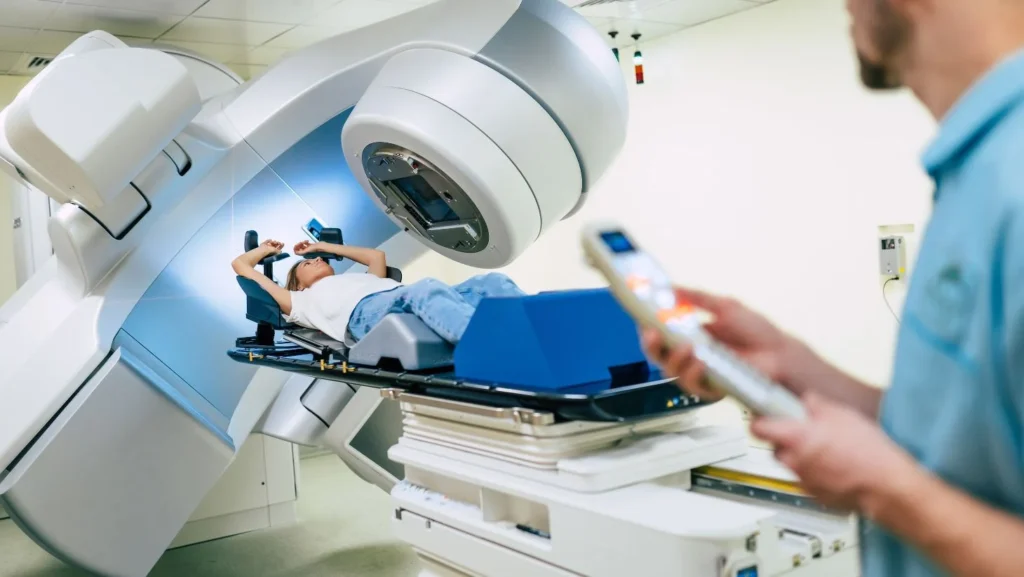Cancer continues to be the most sophisticated and difficult-to-treat disease in contemporary medicine. With more than 100 varying forms, each with different origins, behavior, and treatment responses, cancer necessitates a therapeutic modality with a multitude of dimensions. Survival and quality of life in many patients have improved remarkably over the last few decades with the advancements in science and technology. This article offers an in-depth review of contemporary cancer therapies, both conventional cancer treatments and the latest innovations that are redefining patient care.
Surgery: The Oldest and Still Pivotal Choice
Surgery is one of the best cancer therapies, particularly when the disease is still localized and hasn’t spread. The main objective of surgery is to eliminate the tumor and surrounding normal tissue affected by the disease.
There are several different surgical procedures utilized in oncology, including:
– Curative Surgery: Seeks to eliminate all cancerous tissue.
– Palliative Surgery: Seeks to ease symptoms without trying to cure.
– Reconstructive Surgery: Frequently follows curative surgery to repair appearance and function.
Minimally invasive technologies such as laparoscopic and robotic surgeries have decreased recovery time and complications, making surgical management more patient-friendly and accessible.
Radiation Therapy: Precision in Action
Radiation therapy kills cancer cells by irradiating their DNA with high-energy radiation or particles.
Types of radiation therapy are:
– External Beam Radiation Therapy (EBRT): Directs radiation from outside the body.
– Technological improvements like IGRT and IMRT have improved the precision of radiation targeting, diminishing side effects and enhancing outcomes.
Chemotherapy: Targeting Rapidly Dividing Cells
Chemotherapy is the treatment using cytotoxic agents to destroy or suppress the growth of fast-growing cancer cells. Though very successful for most cancers, chemotherapy tends to be associated with side effects since it also targets quickly dividing healthy cells, such as those of the digestive system, bone marrow, and hair roots.
Chemotherapy is applied for:
– Shrinking tumors before surgery (neoadjuvant therapy)
– Killing leftover cancer cells following surgery (adjuvant therapy)
– Treating cancer that has spread (metastatic cancer)
– The creation of individualized dosing regimens and supportive care drugs has enhanced chemotherapy safety and tolerability.
Immunotherapy: Tapping into the Body’s Defense Mechanism
Immunotherapy is a revolutionary change in cancer treatments with the immune system being enabled to identify and fight cancer cells. It is opposed to chemotherapy, which targets healthy cells and cancer cells equally, immunotherapy is more targeted.
– Checkpoint Inhibitors: Inhibit proteins that prevent the immune system from attacking cancer cells (e.g., PD-1/PD-L1 inhibitors).
– CAR T-Cell Therapy: Genetically engineers a patient’s T-cells to recognize and destroy cancer cells.
– Cancer Vaccines: Trigger the immune system to attack certain forms of cancer.
– Monoclonal Antibodies: Attach to unique antigens on cancer cells to tag them for destruction.
Targeted Therapy: Precision at the Molecular Level
Targeted therapy consists of medicines that selectively interfere with molecules that drive the growth and survival of cancer cells. These treatments act by targeting genetic mutations or proteins that are specific to cancer cells, leaving normal cells untouched and reducing the side effects.
Examples include:
– Tyrosine kinase inhibitors (TKIs): In chronic myeloid leukemia (CML) and non-small cell lung cancer.
– HER2 inhibitors: Typically in HER2-positive breast cancer.
– PARP inhibitors: In cancers with BRCA mutations.
– Targeted therapies are usually combined with other treatments and genomic testing is needed to find appropriate candidates.
Hormone Therapy: Controlling Hormone-Sensitive Cancers
Hormone therapy is for hormone-driven cancers, like breast and prostate cancer. Hormones like estrogen or testosterone are blocked from production or activity by these therapies, slowing or stopping cancer growth.
Options are:
– Selective Estrogen Receptor Modulators (SERMs): i.e., Tamoxifen
– Aromatase Inhibitors: Reduces estrogen levels.
– Androgen Deprivation Therapy (ADT): Reduces testosterone for prostate cancer
– This is particularly effective when combined with surgery, radiation, or chemotherapy.
Stem Cell Transplantation: Rebuilding the Immune System
A Stem cell transplant is most often used to cure blood cancers like leukemia, lymphoma, and multiple myeloma. During stem cell transplantation, unhealthy or damaged bone marrow is replaced with healthy stem cells, which produce healthy immune and blood cells.
Two general types:
– Autologous Transplant: Utilizes the patient’s stem cells.
– Allogeneic Transplant: Utilizes donor stem cells.
– Although complex and intensive, this treatment has the potential for long-term remission.
Future Directions and Emerging Therapies
– Nanotechnology: Provides new drug delivery systems that specifically target cancer cells.
– Liquid Biopsies: Blood tests for cancer DNA that are non-invasive.
– Artificial Intelligence (AI): Assists in the diagnosis of cancer, forecasting outcomes, and tailoring treatment plans.
– CRISPR gene editing: Investigated as a means of correcting cancer-causing genetic mutations.
– The future of cancer treatments is moving towards more personalized, effective, and less invasive methods.
Conclusion:
The cancer treatment landscape is changing at a lightning-fast pace, providing patients with ever-improving and personalized treatments. From the older modalities of surgery and radiation to newer state-of-the-art approaches such as immunotherapy and gene editing, every new development pushes us further toward the ultimate dream: making cancer a manageable or even curable disease. Multidisciplinary treatment and early detection continue to be paramount in achieving maximum success with any treatment plan.
FAQs regarding Cancer Treatments
Q1. What is the most prevalent cancer treatment?
The most prevalent treatments include surgery, chemotherapy, and radiation therapy. The selection relies on the stage and type of cancer.
Q2. Is immunotherapy superior to chemotherapy?
Immunotherapy may be more effective and non-toxic for certain cancers, but it is not applicable to all cancers. It is frequently employed when chemotherapy is ineffective or in conjunction with it.
Q3. Explain the side effects of cancer therapies?
Side effects depend on the treatment but could be fatigue, nausea, hair loss, compromised immunity, and organ-specific problems.
Q4. How is tailored medicine applied in cancer therapy?
Tailored medicine is the use of genetic and molecular testing to select treatments that are most likely to work for an individual patient’s cancer.
Q5. Is cancer ever fully curable?
Certain cancers are curable when diagnosed early. Others can be treated like chronic diseases, and advances in research continually enhance long-term survival.




